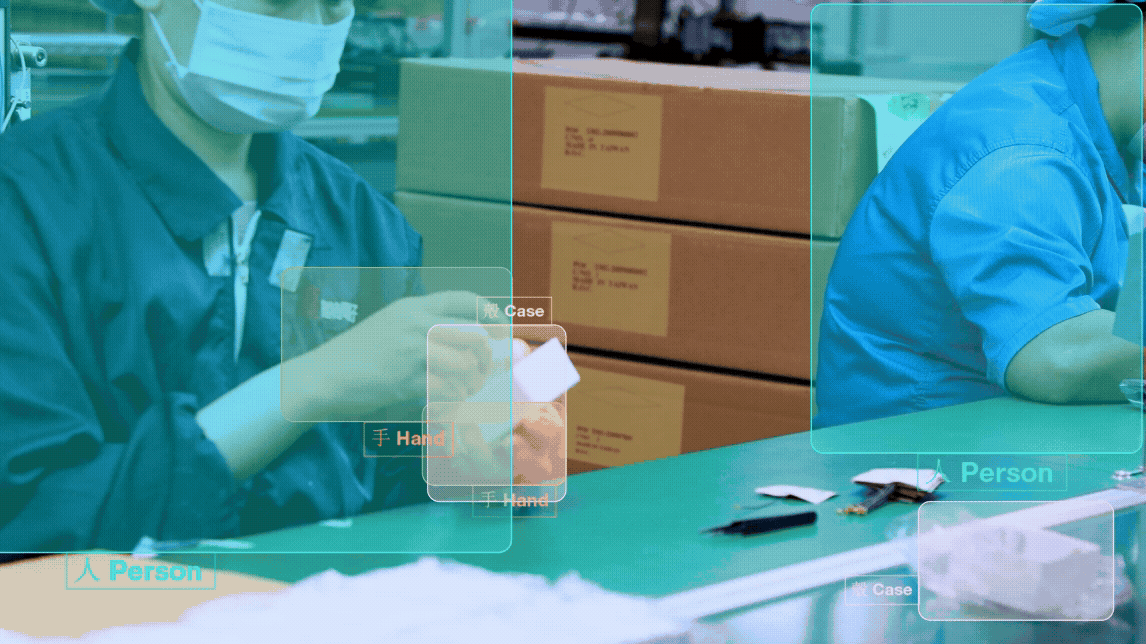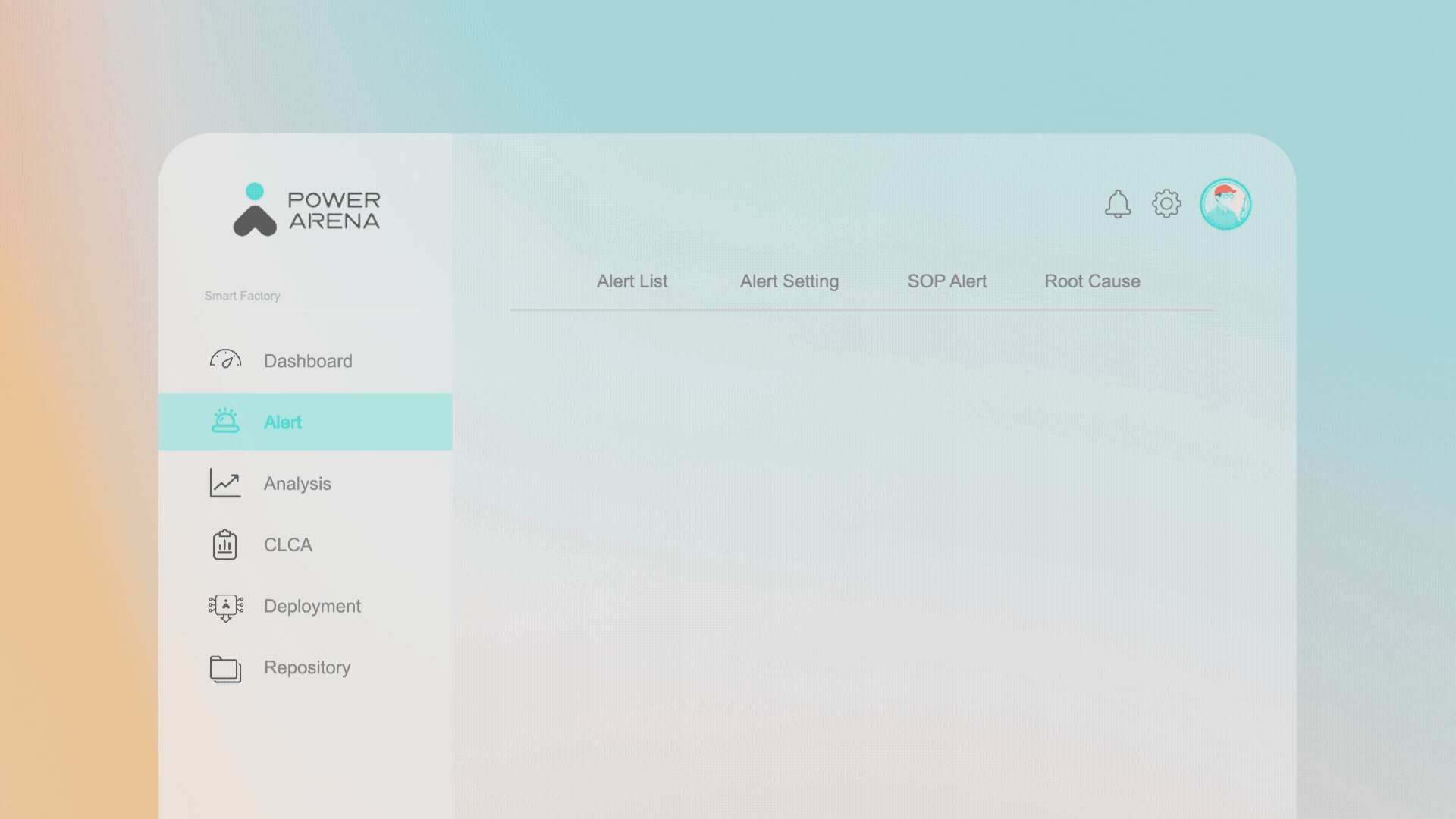By Sursha Wu
Smart factory market trend in 2025-2026
Driven by advancements in technology, smart factories have become a key competitive goal for the manufacturing industry.
Smart factories rely on technologies like AI and IoT to enable data-driven production to achieve higher quality and efficiency.
The implementation helps companies respond quickly and accurately to market demands and on the other hand, transforms traditional manufacturing methods.
Explore how Top Manufacturers Build their Smart Factory
Download the Latest Case Study
Why Smart Factories Are Critical for Resilience in 2025-2026
Smart factories are not just about changing production models or business strategies. What truly drives manufacturers toward digital transformation is the need to remain resilient in today’s rapidly changing markets, adapt to supply chain disruptions, and manage global risks.
Smart Factory Trend : Lean Manufacturing
As businesses evolve with the times, when production costs outweigh gross margins, companies will pursue lean production and smart manufacturing transformation.
── Kevin Liang, Technical Account Manager Corporate Strategic Business Development and Alliance, Delta Electronic, Inc.
Watch the full PowerTalk discussion on YouTube: Challenges and Strategies in Smart Factory
Tap CC for English captions
In recent years, digital transformation in manufacturing has focused on robots, automation, and equipment upgrades. While these technologies improve efficiency, a true smart factory goes further.
Smart factories now have integrated data, AI, and human-machine collaboration to create a connected and self-optimizing production environment.
AI Agent:Proactive problem-solving solution for manufacturing
Modern manufacturers demand more than raw data—they need immediate answers and actionable solutions.
This is where AI Agents come in. Unlike traditional automation tools that simply assist, AI Agents are proactive, anticipating needs, making recommendations, and even taking action while keeping the final decision in human hands.
Generative AI lets us experiment and invent faster than ever. Agentic AI is rapidly expanding what tasks AI can do.
—— Andrew Ng, BUILD 2024 Keynote
In a smart factory, an Agentic AI is not limited to responding to prompts like a traditional LLM. It can integrate data across production lines and workstations, actively retrieve and combine information from structured data and unstructured data like images and audio, and then address problems by itself.
It functions like an experienced industrial engineer, capable of identifying issues and proposing solutions.
Moving to proactive line management: See how Compal adopted AI in its factory
Top Benefits of a Smart Factory (with ROI Proven Examples)
1. Reduced reliance on human labor
By leveraging robotics, automated workflows, and AI vision, factories can minimize errors caused by manual operations and ensure consistent quality.
2. Gained full data ownership and transparency
All production activities, from machine performance to human operations, are captured and analyzed in real time on a unified platform. This creates a complete production history that belongs to the manufacturer, enabling precise analysis, faster decision-making, and smoother audits or customer inquiries.
3. Improved product quality
Smart factories continuously monitor every step of production. AI-powered quality checks and real-time alerts help prevent errors before they impact final products. This reduces defect rates, ensures compliance with strict quality standards, and builds greater trust with customers.
4. Increased production efficiency
By collecting and analyzing cycle times, bottlenecks, and anomalies, manufacturers can dynamically optimize line balancing and resource allocation. Automated data-driven insights allow faster response to issues, reduce downtime, and ensure consistent throughput across all shifts.
Smart Factory Technologies
Robots
Robotics automates repetitive tasks with high precision, reducing human error and increasing production speed. When integrated with AI, robots can adapt to complex workflows and changing production needs.
IoT & MES
IoT sensors collect real-time data on machines and processes, while MES systems integrate this data to optimize scheduling, ensure traceability, and enhance overall production efficiency.
Unified System powered by AI Vision
In-Process Quality Control (IPQC)
A Unified System powered by AI Vision provides real-time monitoring of every production step. It conducts continuous inspection, enforces strict SOP compliance, and detects missing parts, assembly errors, or abnormal cycle times. Operators and managers are instantly notified, ensuring issues are addressed before they affect quality.

PowerArena’s AI vision accurately tracks operator actions and objects, ensuring full compliance with standard operating procedures (SOPs).
Learn more about how AI vision manages human behavior on the shop floor.
Data Integration and Analysis
PowerArena’s AI vision platform consolidates all factory data, including machine (IoT and MES) data and manual production data, into a dashboard in real time, creating detailed data analysis and visual records for every process. This unified data stream enables more accurate and faster reaction to the errors on the shop floor.

PowerArena’s HOP(Human Operation Platform)automatically records and analyzes the entire production process, enabling faster response to errors.
See more details on platform features
Achieving smart factory transformation
Global trade tensions and shifting regional dynamics have pushed many manufacturers to relocate production to Southeast Asia.
However, replicating the same quality and efficiency as their original plants has proven challenging.
Traditional management methods and manual oversight often fail to deliver the consistency needed for rapid scaling.
From Struggle to Smart: Vietnam Factory’s Transformation
Discover how AI vision smart factory solutions transformed operations in Vietnam factories.
A leading electronics manufacturer set up a new facility in Vietnam to diversify its supply chain. Initial operations faced a 20–30% gap in efficiency compared to its parent factory in China.
Workforce instability and inconsistent SOP execution were the primary hurdles.
To bridge this gap, the company adopted smart factory technologies powered by AI vision and digitalized SOP management.
Instead of relying on manual supervision, the system provided real-time, objective production data and automated SOP tracking to enforce Poka-Yoke at every critical step. Managers could quickly identify anomalies, analyze root causes, and optimize workflows based on accurate data rather than guesswork.
AI-Driven Turnaround: Thailand’s Smart Factory Success
A leading power supply manufacturer expanded to Thailand, aiming to surpass the production capacity of its Chinese factory. However, limited local expertise and high worker turnover made it difficult to maintain quality and meet production targets.
To solve these challenges, the company implemented PowerArena HOP, a unified production management platform designed to accelerate smart factory transformation.
Key benefits of PowerArena HOP in this factory:
- AI Vision for Best Practices: Captures and replicates optimal workflows, ensuring that every operator follows the same high-standard procedures as the parent factory.
- Digital SOP Guidance: Provides real-time, step-by-step instructions, enabling new workers to achieve consistent quality and significantly shorten their learning curve.
- Remote Monitoring and Transparency: Offers complete visibility into line performance and quality metrics, allowing managers to quickly identify and resolve issues across all facilities.
Want to see how PowerArena’s AI-powered digital platform can drive your smart transformation?
Frequently Asked Questions (FAQ):
Q1: What is a smart factory?
A smart factory is a digitally connected production environment that uses technologies like AI, IoT, robotics, and automation to optimize processes, reduce waste, and enhance flexibility. It enables real-time data collection, analysis, and action to support continuous improvement and higher-quality output.
Q2: How does AI enhance factory operation with a lean strategy?
AI enhances lean manufacturing by:
- Predicting bottlenecks and equipment failures
- Providing real-time insights for line balancing and resource allocation
- Enabling faster root cause analysis
- Reducing manual errors through automation and smart SOP enforcement
Q3: What are some challenges manufacturers face in digital transformation?
Common challenges include:
- Workforce instability and limited technical skills
- Difficulty replicating efficiency across new facilities
- Managing global risks and maintaining production quality
- High initial investment and system integration
Q4: What are examples of successful smart factory implementations?
- Compal integrated AI Vision and LLMs to proactively manage production lines and improve decision-making.
- A leading electronics manufacturer in Vietnam implemented AI vision and digital SOP systems to overcome 20–30% efficiency gap.
- A power supply company in Thailand used PowerArena HOP to reduce training time, improve SOP compliance, and increase transparency across lines.
Learn more details on the smart factories in Southeast Asia
Q5: What technologies power a smart factory?
Key technologies include:
- AI Agents for proactive decision support
- AI Vision Systems for in-process quality control
- IoT & MES for data integration and scheduling
- Robotics for high-speed, accurate, and consistent task execution
- Unified dashboards for centralized, real-time monitoring and data analysis
Curious how these technologies could work in your factory?
Book a free demo to see how PowerArena can boost efficiency, quality, and scalability.
Table of Contents





